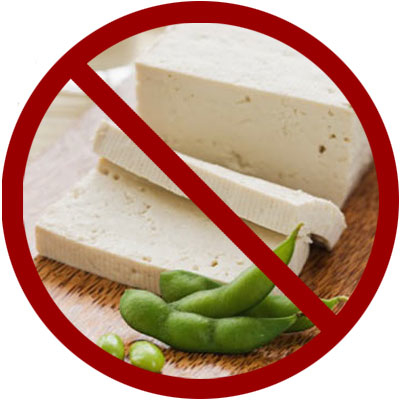



It is estimated that soy is one of the eight major food allergens among children and adults in the United States. A soy allergy is a reaction to soy and any food or dietary substances containing soy. Symptoms can range from mild to severe, depending on the reaction of the immune system. The most severe reaction is anaphylaxis which can be life-threatening and requires immediate medical attention.
A soy allergy can trigger a reaction to proteins, causing the immune system to produce antibodies to those proteins. When you come in contact with soy, the immune system receives a signal from the body to release histamine and other chemicals that cause a range of symptoms,some of which are mild while others can be severe.
Symptoms of a soy allergy can vary from person to person and for most people the reactions tend to be mild. These symptoms can happen immediately upon exposure to soy or can take a few hours to manifest. The most common symptoms include:
A rare but severe reaction called anaphylaxis requires immediate medical attention as it can be lifethreatening. If you have other food allergies or asthma, then anaphylaxis is more likely to occur. Symptoms include:
Infants can develop an allergy to soy which can develop within three months of birth. In most cases, they will outgrow the allergy by the age of two. Symptoms of infants with a soy allergy include irritability, crying and blood-streaked stool. Some infants may also display a lack of weight gain, diarrhea and vomiting.
When to See a Doctor
If you experience any food allergy symptoms after eating soy or foods containing soy, or suspectyou may have the allergy, your doctor can perform tests to determine an allergy. If at all possible, see your doctor while experiencing a reaction. You should seek immediate medical treatment if you develop any symptoms of anaphylaxis, including flushing and inability to swallow.
When visiting your doctor, he or she will ask you about your symptoms and what you may have eaten. The doctor can perform a few different tests to determine if you have a soy allergy. These tests include:
|
Test |
Description |
|
Skin test |
Your doctor will first perform a skin prick and expose the area to the potential allergen. A rash will form in the area of pricked skin if you are allergic. If there is no reaction, then an intradermal test will need to be done when the allergen is injected into the skin. |
|
Blood test |
Your doctor can prescribe a blood test to determine your allergy. A blood test looks for antibodies present in the blood to the specific allergen. |
|
Food challenge test |
In some cases the doctor may directly expose you to the allergen through ingestion under the doctor’s supervision. Then it’s waiting for a reaction and documenting symptoms. There can also be a double-blind test in which the allergen is disguised with other foods. |
|
Elimination diet |
The doctor will ask you to eliminate certain foods from your diet for a specific period of time. Once that time has passed, usually a few weeks, the foods are re-introduced one at a time, looking for a reaction. |
The only solution for a soy allergy is complete avoidance of soy and any foods or dietary supplements that contain soy. Reading labels and educating yourself can help with avoidance of soy ingredients. If eating out, be sure to ask the wait staff about ingredients and food preparation.
First, let’s see what foods you need to avoid eating or even touching to protect you from a soy allergic reaction.
|
Contain Soy |
||||
|
Edamame |
Soy sauce |
Tamari |
Miso |
Tempeh |
|
Soy flour, fiber, grits, nuts or sprouts |
Soy milk, yogurt, cheese, or ice cream |
Tofu |
Textured vegetable protein |
Soy protein |
|
Teriyaki sauce |
Natto |
Soybeans |
Soybean paste |
Soybean curd |
|
Soy lecithin |
Yuba |
Textured soy protein |
Soy infant formula |
Kinnoko flour |
|
May Contain Soy |
||||
|
Worcestershire sauc |
Infant formula |
High protein energy bars and snacks |
Canned soups and broth |
Processed deli meats |
|
Canned fish and meat |
Cereals |
Baked goods |
Vegetable oil |
Low-fat peanut butter |
When you are shopping in grocery, always read labels before buying them. The US FDA mandates that all foods must be labeled if they contain any of the eight major food allergens. Some products, however, are not required to be labeled. These include personal care products such as shampoo, cosmetics, over-the-counter and prescription medications, pet food, and toys and craft items.
Having food allergies can make eating out a challenging experience. Many restaurants cook with oils containing soy because they are cheap. But you can find and choose different cuisines that do not traditionally use soy. When dining out, ask about ingredients and food preparation to avoid any chances of getting access to soy. A small local restaurant or café is more likely to be easier for you to dine at than a large chain restaurant.